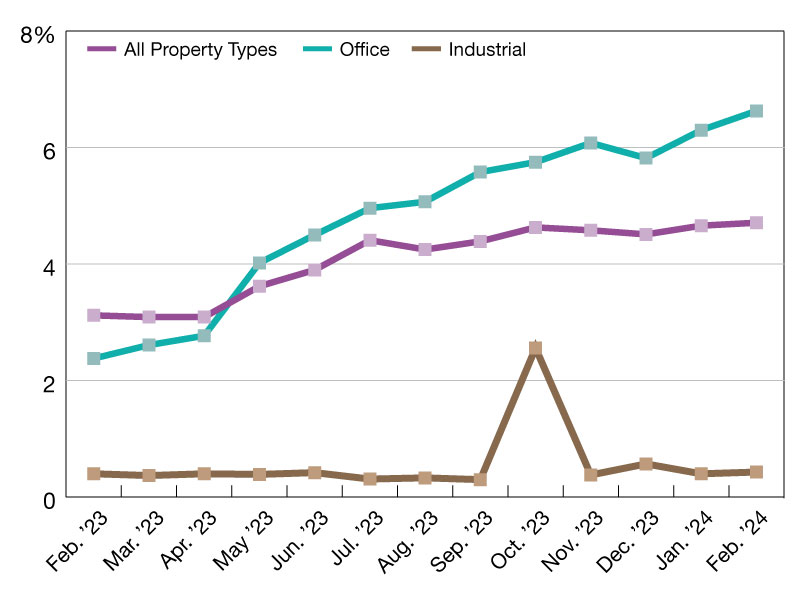Real Estate’s Confidence Game
Unlike holders of more volatile stocks and bonds, real estate investors can be content about their pricing and value assumptions, says Ken Riggs of Situs RERC.

Ken Riggs
The wild whipsaw of stock returns is making investors throw up their arms.
As the world peers out the morning of Dec 10, the stock market is continuing its unsettling volatility. In the two hours since the market opened, the Dow and the S&P 500 are down 1.2 percent. The Nasdaq was treading water but is now currently in negative territory. Over the next hour, day, month or year, who knows what will be driving the stock market? It is clearly not the GDP growth, high interest rates or unemployment, as all of these are pointing to a healthy economy.
The first week of December was exceptionally rocky on Wall Street. It was the worst start to a December since 2008. The Dow ended the week down 4.5 percent, the S&P 500 fell 4.6 percent and the Nasdaq tumbled 4.9 percent. On Friday, Dec. 7 alone, the benchmarks fell between 2.2 percent and 3.0 percent, wiping out all gains for 2018. Remember that at the beginning of the year we saw historic gains for the Dow, which reached 25,000 on Jan. 4—and just 13 days later—topped 26,000.
Narrower and Narrower
The bond markets are showing signs of weakening as well. After solid increases throughout 2018, the monthly average 10-year Treasury rate topped 3.0 percent in October, the first such occurrence since May 2011. The 10-year Treasury rate declined slightly in November 2018, by 3 basis points, despite expectations that the Fed will raise short-term interest rates at its December meeting. The yield curve between the two-year and 10-year Treasurys has been flattening throughout the year, reaching a low of 11 bps on Dec. 4. This is the narrowest the yield curve has been since June of 2007—which historically was a clear sign of a future economic slowdown. The two-year and five-year Treasury yield curve actually inverted during the first week of December.
All of this is happening as the economic expansion is approaching an all-time record length. The unemployment rate, which has remained 3.7 percent for three straight months, is at a nearly 50-year low, consumer confidence is at an 18-year high, and inflation and wages are finally starting to pick up. This has helped fuel continued GDP growth, which was 3.5 percent in 3Q 2018, down from 4.2 percent in 2Q 2018 but still above expectations and the 2.2 percent growth rate in 1Q 2018.
The question is: How does all of this affect the investment prospects of CRE? In 3Q 2018, private CRE total returns, as measured by the NCREIF Property Index, declined slightly, but investors are content with the enduring stability of the income component, considering the wildly fluctuating returns for other asset classes. As of 3Q 2018, YTD returns for CRE, as measured by the NPI, were roughly 250 bps lower than the S&P 500 and 130 bps less than the Dow. The NCREIF Fund Index-Open End Diversified Core Equity was just over 200 bps lower than the S&P 500 and only 81 bps lower than the Dow over the same period.
Historical Situs RERC real estate yields vis-à-vis capital market returns provide evidence that CRE returns remain at competitive and acceptable levels. YTD spreads between CRE and Moody’s Aaa and Baa have averaged 400 basis points and 320 bps, respectively. These spreads are commensurate with historical bond returns.
In the current environment, it’s more important than ever to remember something Warren Buffet wrote in a letter to the shareholders of Berkshire Hathaway: “Price is what you pay; value is what you get.” We have to keep in mind that pricing and value are both grounded in the confidence that our conclusions about price and value are valid. This is possible because CRE is a tangible asset, and it is enhanced these days by the availability and transparency of high-quality data. Therefore, we can be more confident about analyzing CRE performance than, for example, stock market performance. This late into the recovery cycle is arguably the most important time to compare an asset’s price with its underlying worth. Prices are inflated in many markets, including CRE markets, but the underlying confidence on value of CRE generally supports the prices being paid today. We can be confident that rent growth and space market fundamentals will continue to be strong. This confidence about expectations is crucial, and today there is confidence about the expectations of solid private CRE performance, even though these expectations are lower than historical levels. Will this change? Sure, but we don’t know when. For now, the market is in the corner of CRE.
Ken Riggs, CFA, CRE, MAI, FRICS, CCIM, is president & global head of Situs RERC







You must be logged in to post a comment.